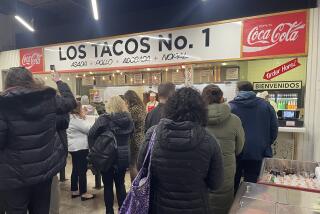Drive around Roatán Island, discover West End village and more
In late afternoons on Roatán Island, after the deluge of day-trippers from cruise-ship visit-days vanished, my friend Michel and I strolled along the sand and dined on fresh fish and seafood — with rice and beans, of course — roasted chicken, brick-oven pizza or steak at one of the beachside cafés, some with music on weekends.
One morning we hopped a 10-minute water taxi to the nearby village of West End, a cluster of restaurants, bars, dive shops, stores with local and mainland-made Honduran arts and crafts, a church and tropical fruit and vegetable street market all strung along a single seaside road.
Clapboard houses on stilts painted in ice-cream colors were engulfed by palms, bougainvillea and hibiscus. There were many casual local eateries and no fast-food chains: Roatán is a throwback to the Caribbean of decades ago — friendly, local and inexpensive.
We were on a lunchtime mission in West End to sample lionfish, a beautiful but invasive Indo-Pacific species some believe was accidentally released from Florida’s Biscayne Beach during Hurricane Andrew in 1992. It’s delicious, but it’s thriving and threatening local species throughout the Caribbean and Central America. Some dive operators and anyone with a fishing license can spear them to reduce populations.
We asked and finally found lionfish fingers on the menu at the Blue Marlin. On the island’s East End, a beach shack eatery called Lionfish Louie’s specializes in lionfish and chips, and lionfish filets.
We finished our West End day at the waterfront Sundowners Beach Bar with a Monkey La La cocktail made with Bailey’s, Kahlua, vodka and cream of coconut and named after the Jesus lizard, locally called the Monkey La La, which can walk on water.
We watched the sun set over Half Moon Bay as we sat surrounded by locals and ex-pats with a variety of accents from Dutch to Brazilian.
Rent a car and get into some monkey business on Roatán Island, Honduras
It’s worth renting a car for a day to explore Roatán Island, with its fishing villages on stilts and place names such as Hottest Sparrow Bay, Neverstain Bight and Alligator Nose.
We started with Gumbalimba Park, a nature reserve ideal for kids that is between West Bay and West End, where you can get up close to cheeky capuchin monkeys — hold on tight to your sunglasses — and flamboyant scarlet macaws. There’s also a zip-line through the rainforest canopy.
East of Gumbalimba and the West End, Anthony’s Key Resort offers opportunities to dive or snorkel with dolphins who cavort with visitors. The Roatán Museum there documents the tumultuous island history and characters such as buccaneer Henry Morgan, after whom a rum was named.
At French Harbour there’s an iguana sanctuary, and near Jonesville a boat tour winds through the narrow channels of a mangrove forest to the rustic Hole in the Wall eatery, an ideal place for lunch. Drop in on the town of Punta Gorda, home to the Garifuna, an Afro-Caribbean people with a distinct language, costume, dance and food.
My friend Michel and I loved our lazy daily routine of snorkeling and hanging out on the beach. Those days started early with a good-morning wave to Santos, in charge of the beach in front of our condo. As he raked the sand into exquisite patterns, I felt guilty for tracking footprints across his tropical version of a formal Zen garden as I headed for my power beach walk.
More to Read
Sign up for The Wild
We’ll help you find the best places to hike, bike and run, as well as the perfect silent spots for meditation and yoga.
You may occasionally receive promotional content from the Los Angeles Times.






